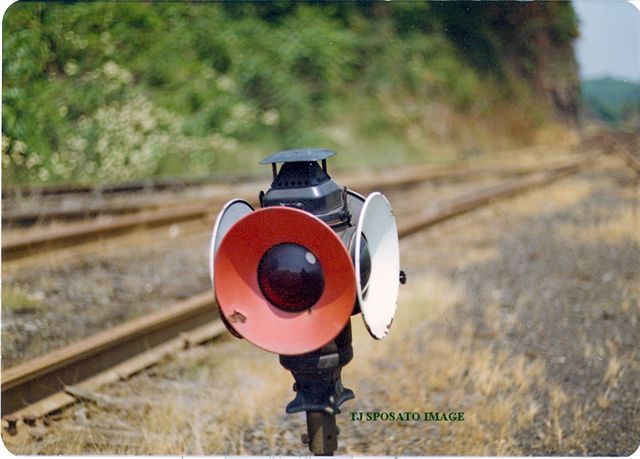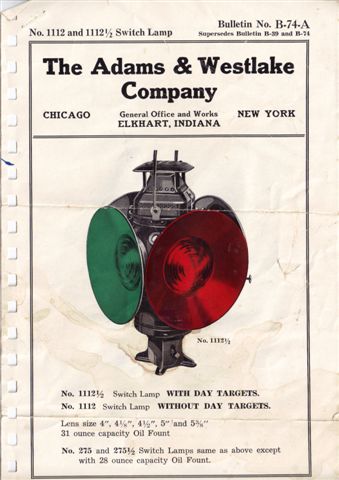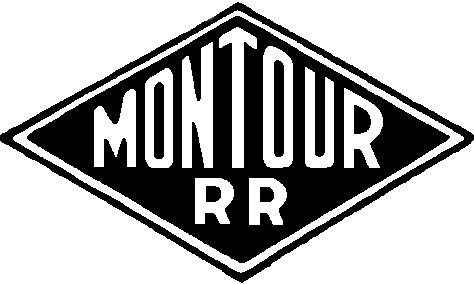Montour Railroad
Mileposts
Bridges
History
Maps
Roster
Mines
Links
Gallery
Working on the
Montour
Sposato
Stories
Employees
Railroading
101

|
|
Tim
Sposato Stories
Montour RR Silent Guard
 |
 |
|
|
|
Montour
RR’s Silent Guardian
On
a cold winters night, the North wind brought an onslaught of snow,
covering the landscape in a white wonderland as well as the heads of
the 90# RB, Carnegie rolled rail. Extra #34 East struggled to
keep the loaded hoppers destined for the Great Lakes moving. The
friction bearing journals resisting rotation account of the cold lube
oil as well the curving nature of the railroad right of way.
The
Mikado was over tonnage again, as usual during World War II, but still
willing to meet the demands of her country.
The long hours were
wearing on the engineer as he fought the throttle to keep the footing
under the America Locomotive Company built 2-8-2 since
leaving
the water plug at the West End of Hills.
For the hundredth time
the old girl quarter slipped on the icy rail, engineer catching her
quick with the throttle lever while gaving her a squirt of sand, but
not before tearing a few holes in the fire bed
again. The
fireman gritted his teeth, muttering under his breath as he responded
with the stoker motor operating valve, rolling more coal to cover the
holes while glancing at the water glass. Once again the 20
year
old locomotive grabbed the rail, dug in and continued to
strain
at the trailing tonnage. "Bet the captain back in the hack is enjoying
the run-ins and outs of slack" the old hogger thought with a slight
grin.
Now his tired eyes, straining on this snowy night to get
the first glimpse of color as the engine 'rounds the left hand curve
close to the top of the hill, the stack exhaust booming it's
echo
off the rock cut wall, looking for that sentinel at the West End of
Jewell Siding, its green eye glowing quietly, telling him the switch is
aligned properly.
He breathes a little easier, shouldn’t worry
about doubling the hill now, would have , if we had to stop…………….he
keeps ‘em rolling………...
Montour Railroad has an endless supply
of stories in its rich history, trains, coal mines, maintenance
facilities, employee’s and so forth. This little piece of the
past is just as interesting as the rest, mostly ignored, taken for
granted, the silent sentinel of the Mighty “M”.
The majority of
track switches once held the mandatory switch lamp, their colored
lenses carefully watching all movements, day and night. There
were several types and manufacturers of lamps used on the Montour. I
have found different parts relating to these types, left behind in
section shanties, near switches or left over in the storehouse during
the 1970’s. The lamp of earlier years looked to have been the
Lovell-Dressel Company based on a few parts found.
The Lovell
Company was founded in the early 1860’s and manufactured marine lamps.
The Dressel Company founded in the 1880’s specialized in railway
lamps. These two companies merged in the 1920’s and continued
the
use of the Dressel name. The Adams & Westlake company
acquired the Dressel Company in the
1960’s. The
Dressel lamp on the Montour appears to have been replaced by the Adams
& Westlake Company (A&W) lamp on the Montour by the
late 1920’s.
The
A&W Non-Sweating Switch Lamp, No. 1112 ½ was the choice of
management to be standard on the line. This one being
superior to
others, in that the weather elements of winter and summer
effected it’s operation very little as well as it rugged
construction and ability to stand up to hard use. It was equipped with
the patented “Balanced Draft Ventilation” system that proved to be the
best over all other types of signal lamp ventilation. This
system
allowed for a moisture free and wind proof body design, critical to
outdoor operation.
This lamp was used continuously from the
1920’s on all main line switches and selected yard and mine track
switches into the mid/late 1960’s. From that time on, the main
line lamps slowly disappeared, the yard lamps still
being
used on a few switches at Champion and Montour Jct. These
switches tended to be closer to the engine, car shop and yard office
area as well as Boggs Yard. The more remote switches were
susceptible to vandalism and now, railroadiana collectors.
These
collectors saw that lamps were starting to be less used by RR’s in
general and thought best to help themselves before they all were gone.
Lamp
#1112 ½ stood about 17” tall and was equipped with enameled, 9” day
targets……2 white, 2 red. The 4 ½ “lenses were green
and
red, the green being used in the white target, red with red
target. These lenses were made by several makers including
Corning, Kopper’s and A&W to name a few.
The lens
exterior surface was smooth and the interior had a stepped surface
similar to the Fresnel Lens, that also added material
strength. I
have also found that some lamps had 10” targets and 5” lenses based on
some parts left on the MRR.
The lamp body had a small peephole
about 2/3 way up and was hinged at the top allowing access to the
square vent cone, hoop and oil fount. The fount was generally
31
ounce capacity, but I did find a few that were smaller 28 oz with an
adapter to allow proper fitting in the lamp body. The body
was
painted with an industrial gloss black, enamel paint. It was equipped
with a large bail handle for carrying.
The RR was divided into
numerous maintenance sections at one time, each section had the section
shanty for track gangs to report to and in turn they were responsible
for their section of track. Duties also included maintaining
switch lamp operation. Each week, generally on Fridays, the
lamps
were cleaned of soot and founts replenished with specified lamp oil in
early days and then kerosene in latter times. Burner wicks were
replaced or trimmed and any other repairs from vandalism or wear were
made. When the enameled targets rusted, paint was
used to
recover them, dulling the glossy smooth finish.
The section
foreman would also find several times during the week to inspect his
section and would check the lamps as part of the
inspection. As these sections gangs were eliminated
the
duties fell into the work schedule of the remaining gangs. Eventually
the RR was down to two sections by the 1960’s and the lamps started to
see neglect.
By the early 1970’s, when I was able to explore the
Montour, lamps were a rare treat. Few remnants of
them
remained, Boggs Yard had some as well as the West End Champion and
Montour Jct. still displayed complete lamps on some
switches. Most lamps were stolen or damaged; I had found
damaged
lamps at Brookside and Jewell switches that were ‘rescued’ on the
Mifflin end of the railroad and a complete lamp at Hills Transfer early
on. Occasionally parts can be found in the area around switch
locations even today. Mostly shards of red and
green lenses
or rusted targets or bodies.
After my employment on the
RR, Imperial, B&T,Champion and other switch lamps,
all
heavily vandalized were rescued. The four remaining section
shanties, Montour Jct., Gilmore Jct., Cowden, McMurray and the tool
shed at Champion yielded numerous lamp components that I was able to
salvage. Using these parts found in shanties and the generous
Storehouse keeper, allowed me to reassemble several of the lamps to
operation again. The MRR Jct. storehouse still had a few new
lamps
in the 70’s that were hanging on the back wall. It took a lot
of
begging to get one, fortunately I was lucky enough to rate one as they
were handed out to several other employees.
Here’s
a quick story that allowed me to become a common name in the
Superintendant Rauschart’s vocabulary. As an early teenager,
a
couple of us using a “Loblaw’s Grocery" shopping
cart, made
a several mile journey to the Kiefer’s Sand Track in Bethel
Park.
The switch had been removed and the switch machine was sinking into the
mud of the drainage ditch for some years. We dug it out,
complete
with high staff and targets attached, loaded it into the cart and
pushed it to my house. There we disassembled it, removing
years
of rust, mud and paint. Total reconditioning followed
including
fresh oil and new paint. Black painted machine and staff, correct color
of red and white paint, found in the McMurray shanty, a little old, but
not too bad after much stirring.
Another trip with the grocery
cart at night we brought back two RR ties. These were mounted
by
our sidewalk to the driveway and the machine mounted to them, complete
with spikes, plates and a short piece of 90# rail, all from the retired
Kiefer spur. Using a lamp body and parts
found in the
McMurray shanty we were able to install a complete operating switch
lamp. It looked splendid! The lenses glowing brightly at
night. Occasionally we’d throw the switch to change the
color,
just beautiful!
Did not last long though, not sure if someone
reported it or by chance (I suspect the former) but some how the
Montour management got wind of it. I came home from school to
find P&LE RR, Sgt. Joe Delia sitting with my mom on the front
porch. Well the questions started, you know the answers……the
following day the Montour’s B&B Dept truck with Al Maga and a
helper, accompanied by Superintendant F.C. Rauschart and Track
Supervisor Joe Playchek, arrived to remove our
masterpiece.
It was returned to Montour duties again. They all had a good laugh and
were very complementary on our rebuild. I was able to shake hands with
everyone and no ill will was to be held. This event opened a
door
for me later in life, unknown to me at the time, and made me well known
with the P&LE Police Dept…..and their watch list, I suspect….
I
did find out later that switch machine, being rebuild to almost new
condition, found a home on the main line at the West End Hills until it
was removed during the dismantling of the RR. The lamp, I
figured,
ended up in some employee’s collection as soon as it left my house.
Attached
is an Adlake catalogue page found in the Montour Storehouse. I’d like
to point out that this same Model 1112 ½ lamp is still offered by the
Adlake Company of Elkhart Indiana. www.adlake.com/
Also
a photo taken on July 8th 1974 at the West End of Boggs yard showing
one of the last lamps still standing duty, un-lit when I opened it but
re-lit when I left.
Sorry for the long wind here, but getting
back to memories of Montour will always be of major interest to
me. Having a chance to see her lamps in service, red and
green
glowing eye's in the darkness, silently on guard, even on a small scale
in the final days will have a special place in my heart.
Tim Sposato
|
|
 Montour
Railroad
Montour
Railroad 